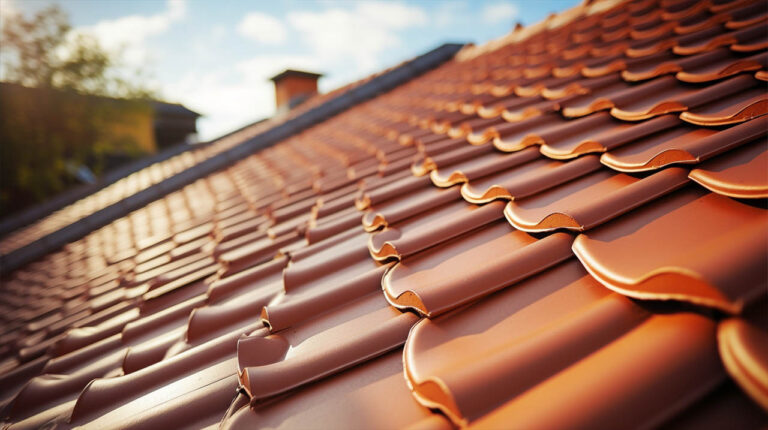In regions prone to seismic activity, ensuring that your home is equipped to withstand the forces of an earthquake is paramount. One of the most critical components of any home is the roof, and its design can significantly influence the overall structural integrity of the building during an earthquake. At TecHero Roofing, we prioritize the safety and well-being of our clients. Here, we present a comprehensive guide on designing an earthquake-resistant roof.
1. Embrace Lightweight Roofing Materials
The weight of your roofing material plays a pivotal role in determining its earthquake resistance. Lighter roofs are inherently less susceptible to collapsing under seismic forces.
Metal Panels
Metal roofs, particularly those made of aluminum, are not only lightweight but also boast impressive earthquake resistance. Remarkably, they often weigh less than traditional asphalt shingle roofs.
Fiberglass Shingles
For those seeking an affordable yet lightweight option, fiberglass asphalt shingles are an excellent choice. They are notably lighter than other asphalt shingle variants, such as architectural shingles.
Wood Shakes and Shingles
Wood, being a relatively lightweight material, makes wood shakes and shingles ideal for regions prone to earthquakes. While wood shakes offer a rustic charm, wood shingles provide a contemporary look.
Note: It’s advisable to avoid heavy roofing materials like slate, clay, and stone tiles. These materials, being the heaviest in the market, can compromise the earthquake resistance of your roof.
2. Prioritize the Right Roof Frame Design
The design of your roof frame is equally crucial in ensuring earthquake resistance.
Optimal Roof Slope
For maximum earthquake resistance, it’s recommended to have a roof slope between 3 and 15 degrees.
Strategic Placement of Roof Blocks
Roof blocks should be strategically placed between every roof rafter, especially where the rafter meets an exterior home wall. This arrangement facilitates the transfer of lateral earthquake loads to the walls, preventing the roof frame from rotating or collapsing.
Secure Rafter Connections
Ensuring that rafters are securely connected to the top of exterior home walls and framed with ridge boards can further enhance the transfer of lateral loads to the walls. This ensures the overall structural integrity of the home during seismic events.
Incorporation of Seismic Ties
The addition of metal strap connectors, commonly referred to as seismic ties, to your roof frame can significantly enhance its ability to withstand seismic forces.
3. Choose Earthquake-Resistant Roof Sheathing
Roof sheathing, also known as roof decking, plays a pivotal role in the overall strength and stability of a roof.
Plywood and OSB Sheathing
While there are various types of roof sheathing available, experts at TecHero Roofing recommend plywood or OSB (oriented strand board) sheathing for homes in earthquake-prone areas. OSB sheathing, composed of numerous rectangular wood strands glued and pressed together, is as robust as plywood, making it a popular choice among homeowners.
Deck Board Orientation
To further enhance the earthquake resistance of your roof, ensure that your deck boards are placed perpendicular to the rafters. This horizontal arrangement amplifies the strength of your roof.
Conclusion
Living in areas like North Hills, where seismic activities are not uncommon, prioritizing an earthquake-resistant roof design is essential. Whether you’re considering a roof repair in North Hills or seeking roofing services in North Hills CA, always ensure that earthquake resistance is at the forefront of your design choices. At TecHero Roofing, we are committed to providing our clients with roofing solutions that not only meet aesthetic preferences but also prioritize safety. Remember, the right roofing choices today can safeguard your home and loved ones tomorrow.


